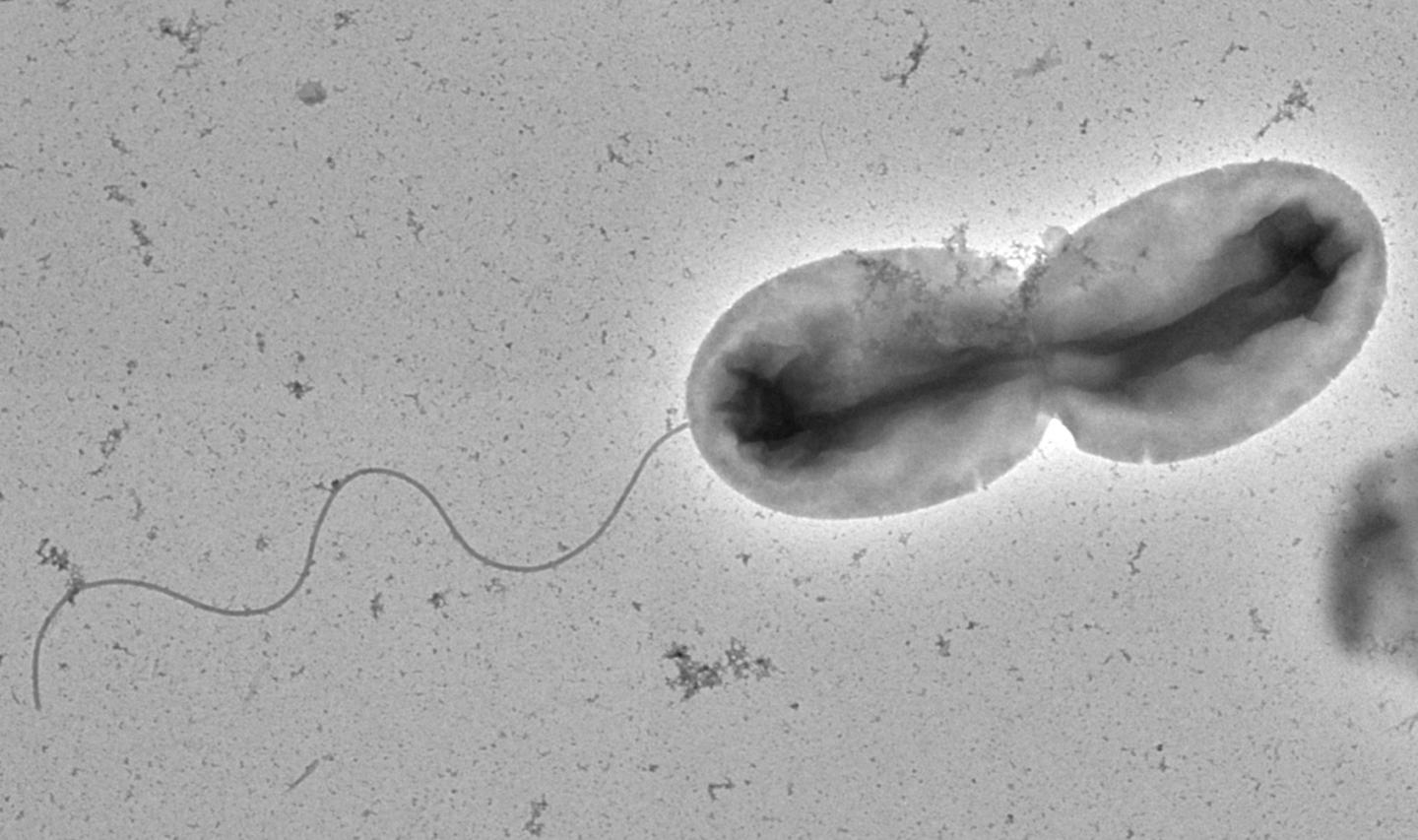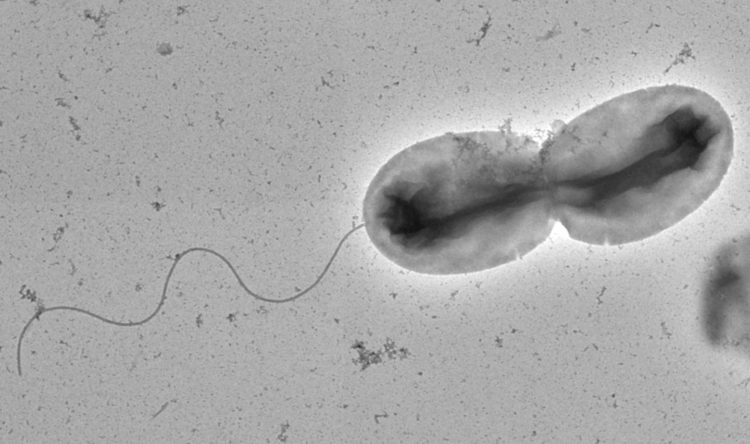A marine pathogenic bacterium forms specialized cells for dissemination

Credit: MPI f. terrestrial Microbiology/ Ringaard
Vibrio parahaemolyticus can be found in the tidal zones in estuarine areas. The marine bacterium causes acute gastroenteritis in humans and is the leading cause for seafood borne illnesses in the world. Researchers from the Max Planck Institute for Terrestrial Microbiology in Marburg, Germany, have identified specialized “adventurer” cells that ensure the bacterium’s dissemination and prevalence. Their new findings are an important basis for the future management of the disease.
In Central and Northern Europe, Vibrio infections are among the “emerging diseases” whose incidence has recently increased or is likely to increase in the near future. Some reasons for this are global trade and the higher water temperatures caused by global climate change. Mussels, oysters and crabs that are found in our supermarkets from tropical regions are possibly contaminated all year round and to a high percentage. They can cause an infection if eaten raw or are insufficiently cooked.
Vibrio parahaemolyticus forms colonies in the tidal zone of estuarine areas, and its complex life cycle is triggered by the respective conditions of this habitat. But how does the species adapt to environmental changes, and how can it colonize new habitats? “In order to develop any measures against the spread of Vibrio parahaemolyticus and related bacteria, we must first understand the structure and distribution strategy of the bacterial colonies,” explains Simon Ringgaard of the Max Planck Institute for Terrestrial Microbiology in Marburg. In their laboratory, he and his team simulate the conditions of the tidal zone and thus investigate the bacterial life cycle and mechanisms of movement.
Swimmer and swarm cells
As many other bacteria, Vibrio parahaemolyticus forms special cell types when environmental conditions require it. While short swimmer cells with a single polar flagellum can move quickly in a liquid environment, the longer swarm cells reside within bacterial populations that are attached to solid surfaces. Swarmer cells are specialized for movement over surfaces and can rapidly colonize new surface areas.
The Vibrio bacterial swarm colonies show a distinct stratification: while the middle of the colony consists of rather shorter cells, the longer swarm cells are found in the outer areas of the colony. As the Max Planck researchers were able to show, if the swarm colony is flooded with water, as in the natural habitat during the tidal rhythms, cells are released from the colony into the liquid surroundings. Surprisingly, however, these released cells are neither the long, swarmer cells nor the very short cells found in the middle, but a completely unexpected and new cell type of medium length. These “adventurer cells” are optimized for living in water and possess particularly good swimming properties.
Spreading disease
The research team showed that once released, the adventurer cells were highly capable of spreading in their new liquid environments and importantly they were able to “smell” and move towards potential nutrient sources such as chitin – an essential component of marine animals to which Vibrio parahaemolyticus attaches. Thus, the release of adventurer cells into the water has the potential to help spread the bacterium in the environment and bring Vibrio parahaemolyticus to new shores, like to the surface of seafood. And thus into our food chains, consequentially likely enhancing the risk of human infections.
The Marburg researchers investigated the life cycle as a function of environmental conditions and time, both morphologically and on the molecular genetic level. Here they found characteristic expression patterns that could also be used for the future detection of the bacterium. But perhaps this involves even something much more far-reaching, says Simon Ringgaard. “Our experiments show that the colony always has a sub-population of adventurer cells that are ready to be released immediately upon flooding. Adventurer cells would thus be of central importance for the worldwide epidemiology of the disease – and thus also for measures to contain it, for example in industrial aquaculture.”
###
Original publication
Freitas, C.; Glatter, T.; Ringaard, S.
The release of a distinct cell type from swarm colonies facilitates dissemination of Vibrio parahaemolyticus in the environment.
The ISME Journal October 17, 2019
Media Contact
Simon Ringaard
[email protected]
49-642-117-8301
Original Source
https:/





